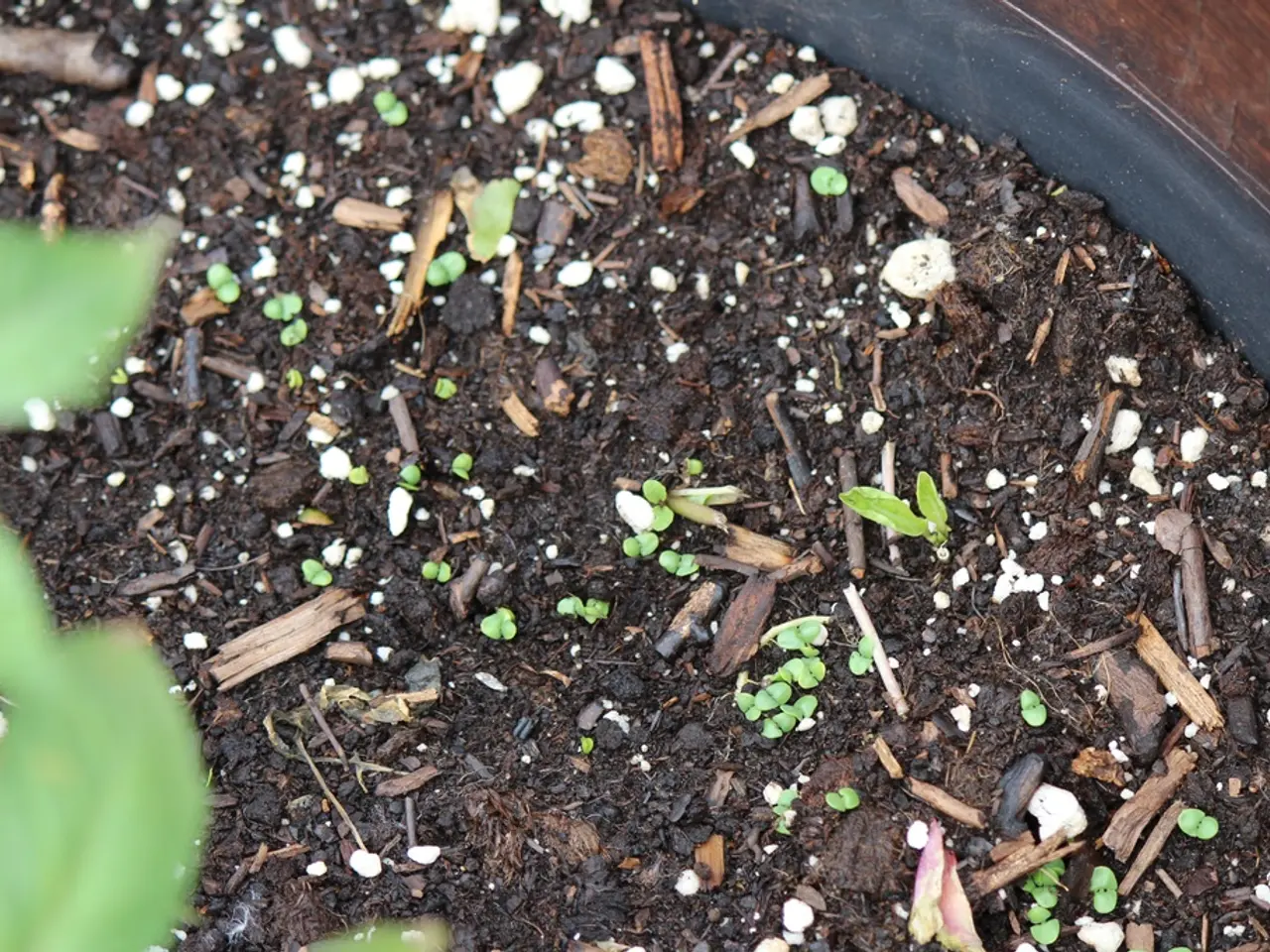Transforming Compacted Ground for Gardening: A Detailed Guide
Improving Clay Soil for Healthier Plant Growth
Clay soil, while common in many gardens, can pose challenges for gardeners due to its sticky nature and poor drainage. However, with some simple steps, you can transform your clay soil into a thriving garden bed.
Identifying Clay Soil
If your soil is sticky and easily compacted when damp, and forms a brick-like surface when dry, it's likely clay soil. To confirm, you can perform a ribbon test. Simply take a handful of soil, roll it into a ribbon, and if it's longer than 2 inches, it's likely clay soil.
Amending Clay Soil
The key to improving clay soil is to add organic matter. This can include compost, mulch, leaves, grass clippings, straw, or manure. Aim to add a layer of organic matter that is 5-8 cm thick over the clay soil and use a tiller or shovel to work it into the topsoil.
Organic Mulch Options
Shredded leaves are a simple and effective mulch option, and they are free and easy to find. Other organic mulch options include straw, shredded bark, and grass clippings.
Raised Beds
Creating raised beds for planting in clay soil can improve drainage and be a good alternative to amending the soil. When creating a raised bed, add organic matter to the clay soil to improve its structure and create better drainage.
Testing Soil pH
The pH level of clay soil can vary from 5.0 to 7.5, and if you're planning to plant vegetables, the pH should be slightly acidic, between 6.5 and 7.0. To test the pH level of your soil, you can use a soil testing kit or send a sample to a lab for testing.
Adjusting Soil pH
If your clay soil has a low pH level, you can raise it by adding lime or dolomite. Conversely, if your clay soil has a high pH level, you can lower it by adding elemental sulfur or acidifying fertilizers.
Mulching
Mulch not only helps to suppress weeds and retain moisture, leading to better plant growth, but it also encourages worms and other soil organisms to live below it, creating tunnels that aerate the soil. When mulching, be mindful of the season and climate. Mulch lightly during rainy periods and apply a thicker layer during hot and dry conditions.
Maintenance
Keep adding mulch throughout the growing season to maintain its benefits. In the winter, use a layer of straw or organic matter to protect the soil from heavy rain and erosion.
Improving Drainage
To improve the drainage capabilities of clay soil, it is recommended to incorporate at least 10–20% compost mixed with the excavated soil. Compost loosens heavy clay, improves airiness, provides nutrients, and promotes beneficial microorganisms. Mix the clay with other organic matter to improve its drainage capabilities.
Plant Selection
When planting in clay soil, opt for vegetables with shallow roots such as leaf lettuce, beans, and squash. These plants are better suited to the moisture-retentive nature of clay soil.
Raised Beds Settling
Raised beds filled with organic matter will settle over time as the material breaks down, so plan to add more soil or organic matter to the top of the bed each year.
By following these steps, you can transform your clay soil into a thriving garden bed, perfect for a variety of vegetables and plants. Happy gardening!
Read also:
- Dinesh Master's Expedition: Acquiring Mango Orchard through Our Online Platform
- Solar panels decreasing expenses and aiding ecological preservation
- Expanded Plant-Based Protein Industry Forecasted to Reach a Value of $30.8 Billion by 2034, Growing at a Compound Annual Growth Rate (CAGR) of 7.1%
- Key Stats Presented in 29 Infographics






